If you want to learn how to build an audience from scratch, this guide is for you.
In today’s fast-changing digital landscape, growing an audience that genuinely connects with your brand is more important than ever. Building a dedicated audience means going beyond increasing online visibility—it’s about forming real connections with people who value what you offer and engage with your content.
With an engaged audience, your brand can gain traction faster, increase loyalty, and foster a sense of community, supporting your business through growth and challenges. And the benefits don’t stop there. A loyal audience gives valuable insights into customers' needs, allowing you to tailor your content and strategies for maximum impact.
In this guide, I'll explain 10 actionable strategies for building an online audience that supports your goals and drives your brand forward. Let’s get started.
10 Strategies to Grow Your Audience
- Publish High-Quality Content Consistently
- Understand What Your Audience Wants
- Share Your Story and Be Transparent
- Share Your Content on Different Platforms
- Build Lasting Connections Through Email Marketing
- Start a Podcast
- Partner With Other Creators
- Use Facebook Retargeting Ads
- Spy On Your Competitor’s Audience-Building Strategies
- Measure and Monitor Audience Size
1. Publish High-Quality Content Consistently
High-quality content is the key to any audience growth strategy.
Consumers expect to be able to access useful content throughout their purchasing journey. They want to research products and services, find solutions to pain points, and get advice that helps them achieve their unique goals.
At a time when companies can generate content with AI solutions at the click of a button, consumers are searching for more relevant, unique, and engaging content, not generic advice they could find anywhere or content generated purely by AI.
This means sharing human stories, actual experiences, and advice that connects on a personal level.
Publishing content consistently is essential to stay on top of mind with your audience. Set a realistic publishing schedule, using a content calendar to keep yourself on track.
Posting regularly helps you maintain visibility, but quality is just as important as quantity. Focus on topics that address common questions, solve real pain points, and support your audience’s goals.
Where possible, plan and batch content in advance. This way, you’re not struggling to create something new every week. Instead, you’ll have a steady flow of posts ready to go, allowing you to focus on quality and depth in each piece.
It can also help you plan the content you’ll produce more effectively, ensuring you create content that delivers value, answers customer questions, and drives users through the sales funnel.
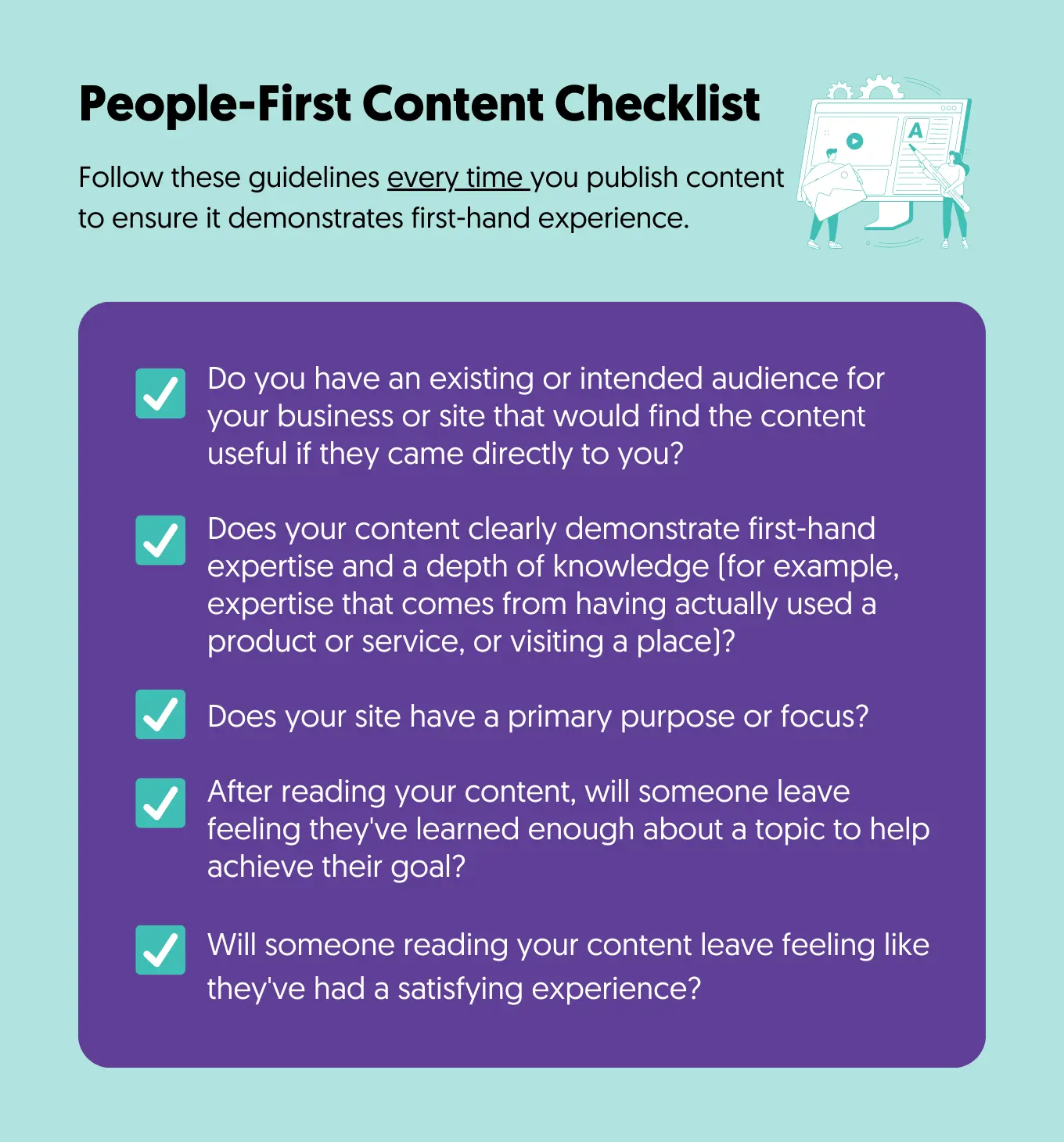
2. Understand What Your Audience Wants
As mentioned above, while frequency is important when creating content, it’s also essential to prioritize quality.
Consumers are increasingly searching for content that rapidly and efficiently addresses their questions and concerns.
If you can show your readers that you understand their priorities, goals, and pain points, they’re more likely to resonate with you.
While tracking consumer preferences is becoming increasingly difficult, there are still various ways to learn about your audience.
- Conduct keyword research using tools like Ahrefs and Semrush to determine what kinds of phrases and words users search for.
- Speak to your sales and marketing teams about the questions they usually encounter when interacting with your consumers.
- Use CRM tools to gather and analyze consumer data.
- Use tools like Google Trends to see what’s trending in your industry.
- Research consumer conversations on forums like Reddit to get ideas about your audience's questions or problems.
3. Share Your Story and Be Transparent
As mentioned above, the rise of AI content generators has led to an influx of generic content produced by bots that curate information from around the web to create new pieces.
While this content can sound unique, it often fails to offer any genuine human insight.
Content creators must demonstrate their human side to stand out and engage their audience deeper. Sharing your unique story, from where your brand began to the challenges you’ve faced, gives your content more depth and value.
Moreover, genuine, transparent insights help elevate your content from an SEO perspective. Google’s E-E-A-T guidelines encourage creators to produce content demonstrating experience, expertise, and authority to generate trust.

You can showcase your experience with your audience growth strategy by highlighting your achievements and accomplishments.
You can demonstrate expertise with behind-the-scenes insights, statistics, and reports. Giving customers a behind-the-scenes look at the human being behind the brand also boosts authority and trust.
For instance, Pat Flynn, the innovator behind Smart Passive Income, shares his story of building his business following the 2008 economic collapse. He doesn’t just claim to be an expert. He offers transparent insight into the challenges he has faced over the years and how he has built his unique business.
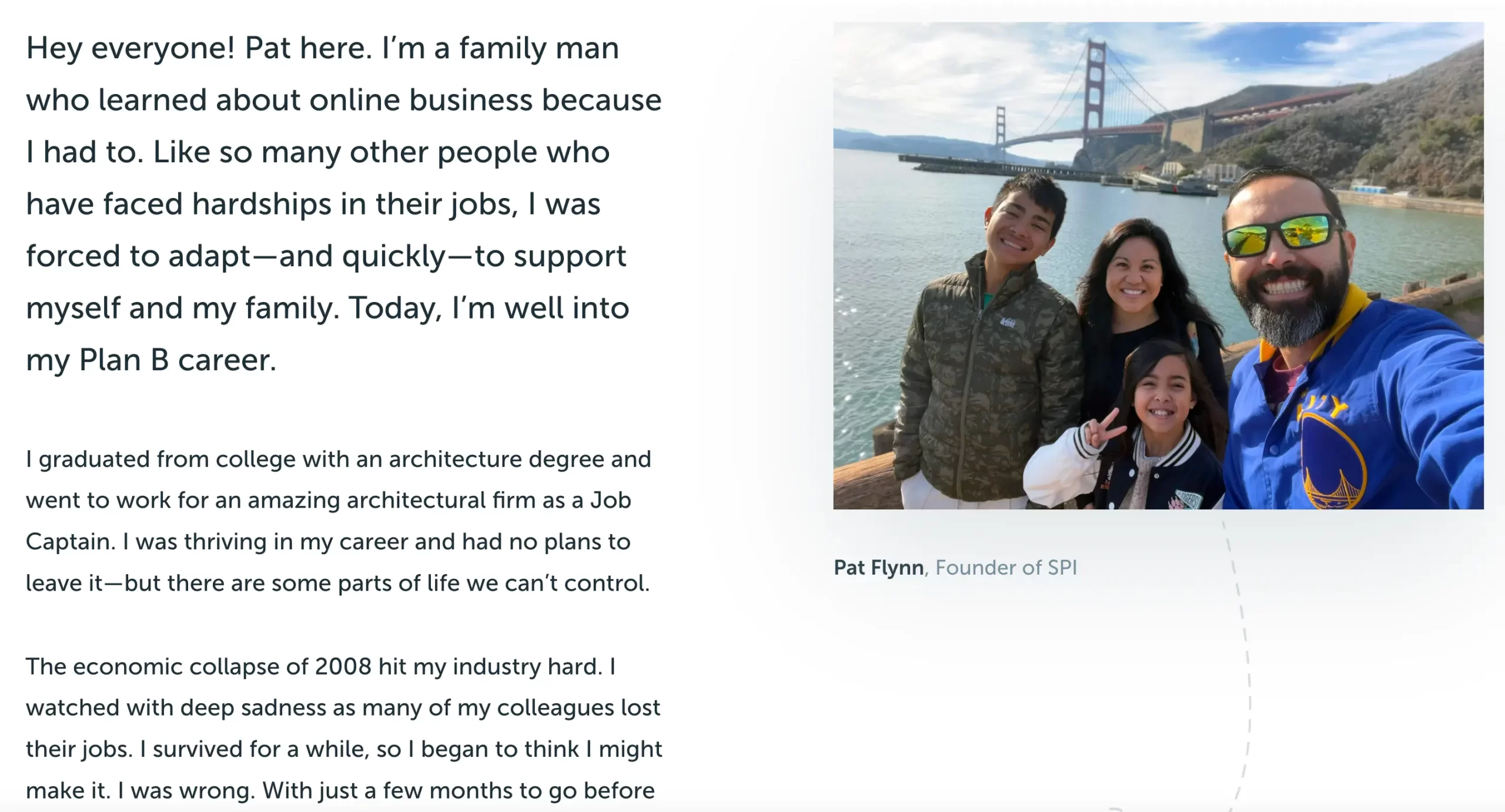
4. Share Your Content on Different Platforms
When learning how to build an audience, it’s worth remembering consumers have more ways to access content than ever before.
People aren’t just reading blogs and articles. They’re experimenting with social media, videos, podcasts, and other channels.
According to Google, around 40% of Gen Z customers use channels like TikTok and Instagram as search engines, looking for new companies and products.
Social media gives creators an excellent way to expand their reach and boost the ROI of their content production strategy. It also offers an excellent opportunity to engage with customers directly.
Companies can host polls on social media to learn more about their customers' interests, respond directly to buyer comments to nurture relationships, and even gather social proof to elevate their brand.
For instance, Gary Vaynerchuk uses social media channels like Instagram to encourage community conversations about marketing topics and business growth. He uses his research and insights from his followers to create new, enhanced content.
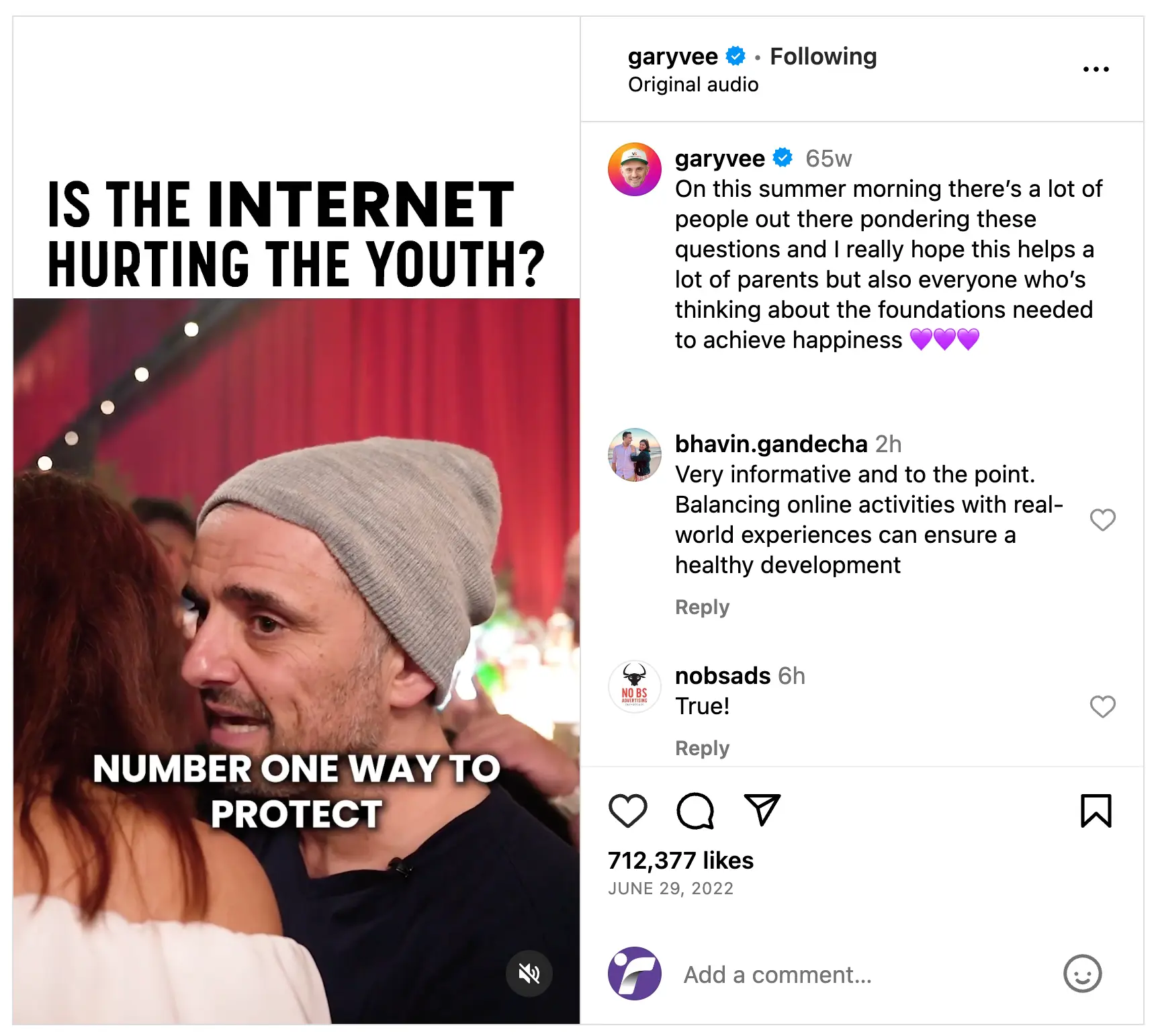
Collect as many insights as possible from every campaign to maximize your omnichannel strategy. Monitor your engagement metrics, from likes and comments to shares, to determine what’s really working for your business.
Remember to adapt your content for each channel you choose. For instance, a simple video posted on Facebook could be reformed into a series of short “Stories” on Instagram.
5. Build Lasting Connections Through Email Marketing
Loyal and engaged audiences aren’t created overnight. To unlock the most value from your audience over time, you must commit to nurturing each connection. An excellent way to do this is to create a robust list of email subscribers.
Collecting email addresses from your target audience drives many benefits.
First, it gives you ownership over your followers, ensuring you can continue to connect with them even when social media and search engine algorithms change.
Secondly, it provides a way to nurture your subscribers with relevant content constantly. Email campaigns can transform first-time buyers into long-term brand advocates, increasing customer lifetime value and revenue.
However, consumers receive hundreds of emails daily and are unlikely to share their contact details with you unless they believe they’re getting something valuable in return. This is why it’s so important to incentivize subscriptions.
Using your research into your target audience and needs, create lead magnets for your email newsletter to encourage customers to act.
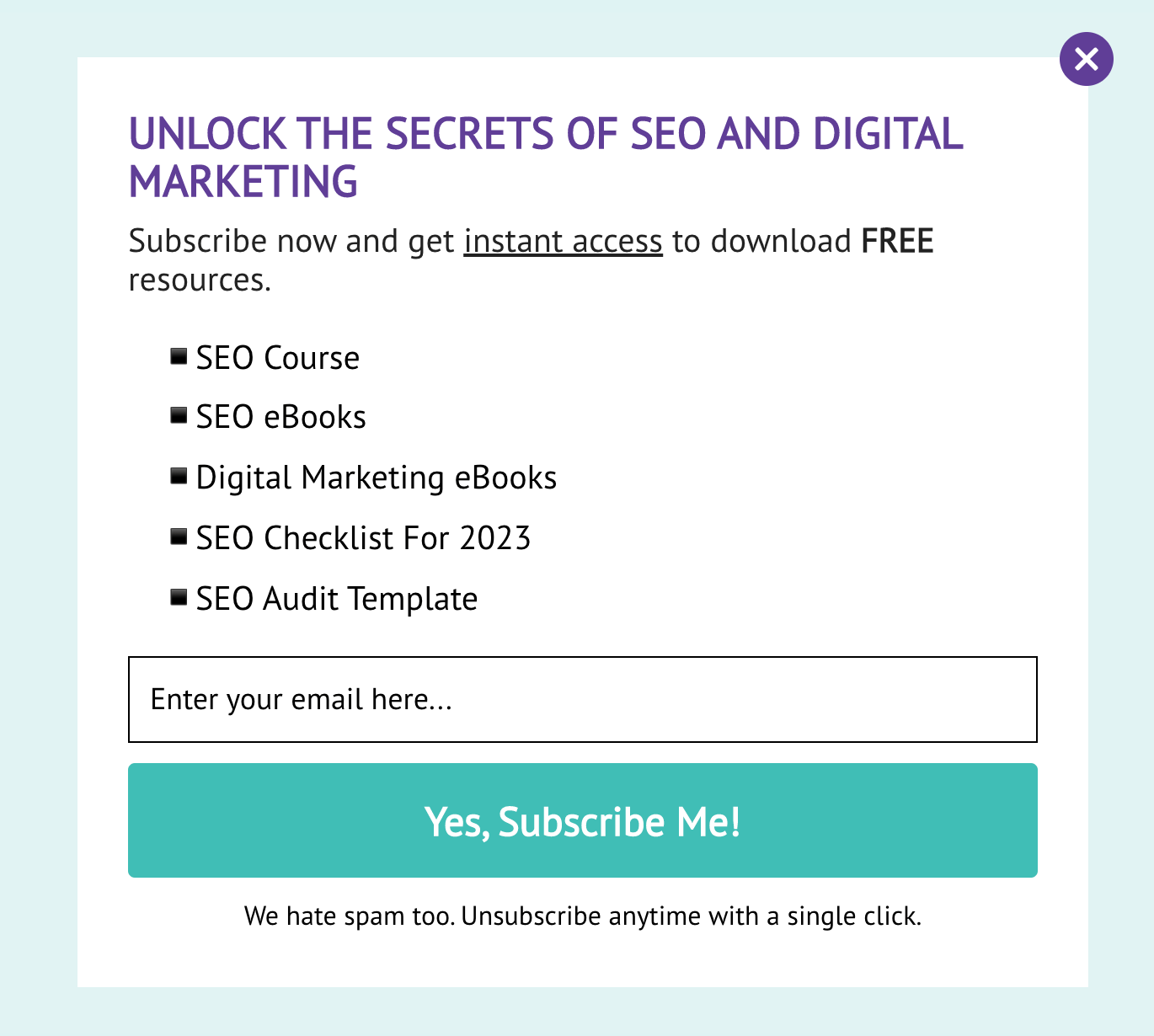
Offering access to free courses, guides, and eBooks allowed us (ReliableSoft) to increase our email list to more than 50,000 engaged subscribers.
6. Start a Podcast
While consumers are wired to respond to visual content in the modern world, many are looking for other ways to build deeper connections with creators and consume content. Podcasts have grown extremely popular in recent years for a few reasons.
Over 90 million Americans listen to podcasts weekly on their smartphones and computers. Podcasts are entertaining and easy to consume, which is the main reason for this.
People can listen to podcasts when driving to work or exercising at the gym. This means they can access information without focusing all of their attention on an article or video.
Creating a podcast allows you to enhance your audience growth strategy by engaging customers frequently through a convenient channel. Plus, creating a podcast is often extremely simple, thanks to simple podcast hosting services and audio editing tools.
You can even repurpose some of your existing content, from blogs, eBooks, webinars, and videos, into insightful podcasts. Alternatively, you can host interviews that highlight your industry expertise and authority.
For instance, Tim Ferris produces a regular podcast where he interacts with experts throughout the business landscape.
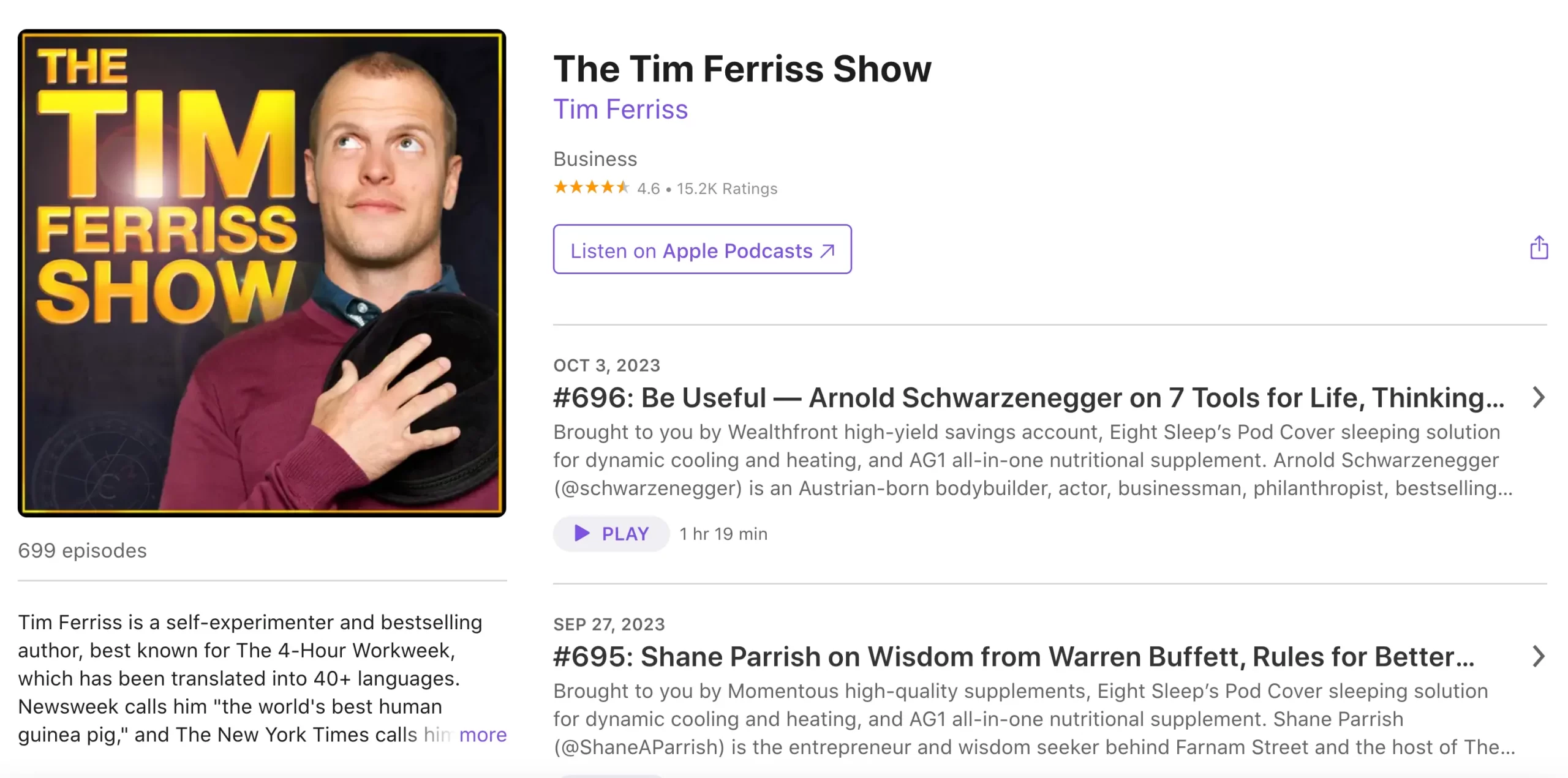
7. Partner With Other Creators
In the competitive world of content production, it’s easy to assume every other creator is an enemy. However, partnering with other creators can help expand your reach and elevate your reputation in your industry.
Collaborations are an effective solution if you’re struggling with figuring out how to reach a target audience.
Other companies, influencers, and content creators are likely to target the same audience as you, though they may offer products and services that don’t directly compete with what you sell. These creators can provide companies with excellent growth opportunities.
There are various ways you can collaborate with other experts in your field. For instance, you could invite a thought leader in your industry to join you in a podcast or video for a powerful interview or a conversation about a trending topic.
For instance, Rachel Hollis connects with digital influencers and asks them to share their stories via her podcast.
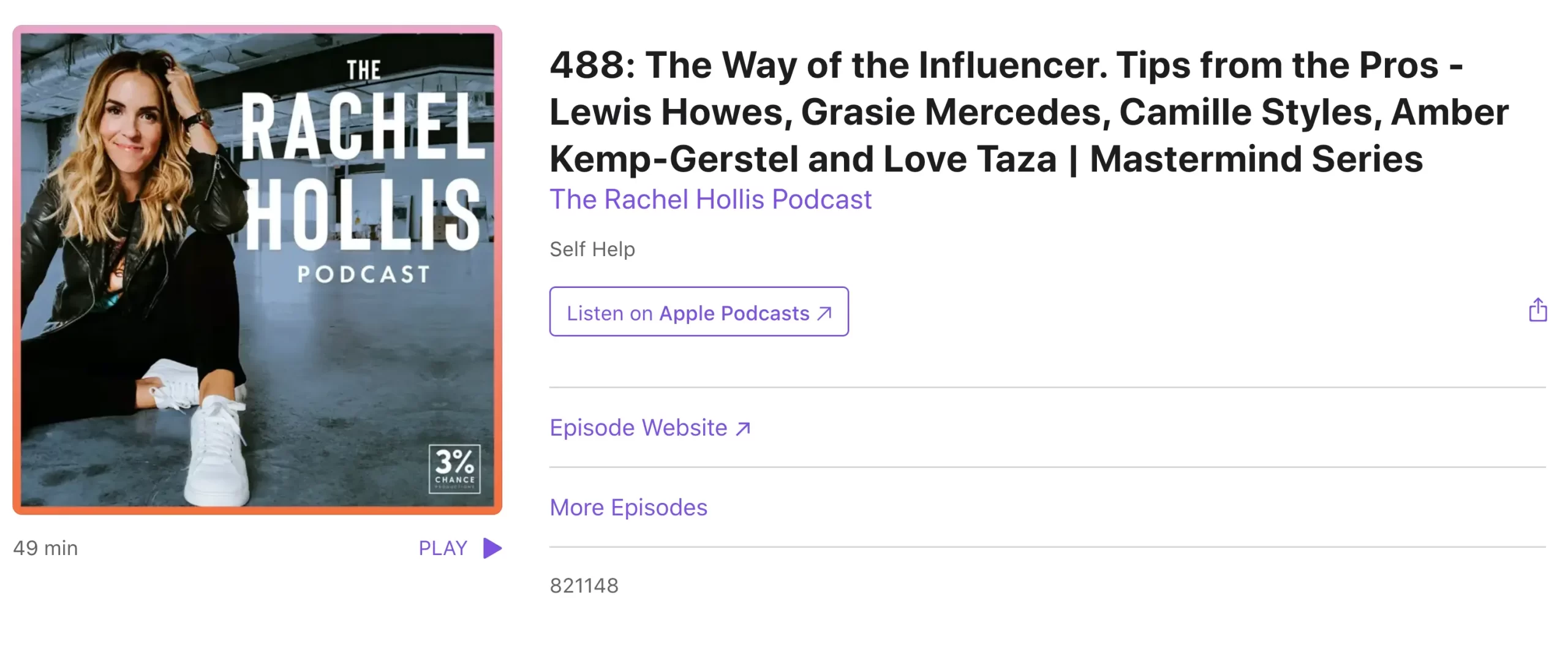
Alternatively, you can consider investing in a mutually beneficial promotional agreement with another creator. You might share some of their posts and quotes on social media and in your articles while they do the same for you.
8. Use Facebook Retargeting Ads
Today’s consumers are overwhelmed with content produced by companies attempting to earn their attention and loyalty. If you don’t constantly remind customers of your business and the value it can offer, they may lose interest.
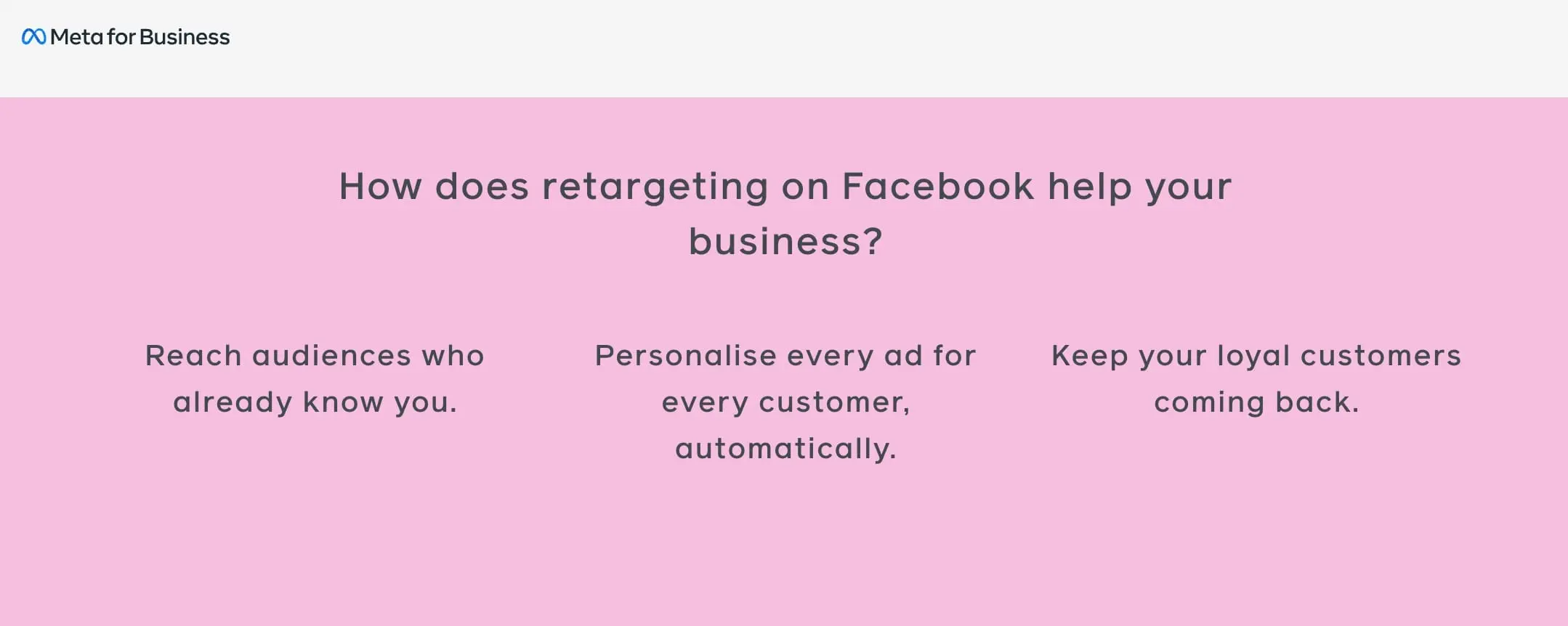
Fortunately, various ways exist to re-engage your audience and keep your brand in consumers' minds.
For instance, Facebook allows you to set up “retargeting ads” designed to serve helpful content to consumers who have already interacted with your brand.
You can target specific customer groups with unique ads personalized to their interests.
This not only helps consumers to remember your organization, but it also engages them with highly relevant content.
9. Spy On Your Competitor’s Audience-Building Strategies
When learning how to build an audience for your online brand, it’s essential to maintain a unique voice and identity. However, that doesn’t mean you should ignore your competitors. Your competition can offer a useful insight into growth tactics that work in your industry.
Examining your direct and indirect competitors, their SEO and content strategies, and even their marketing channels offers valuable guidance. You can use tools like SEMRush and SERanking to gain insights into how much traffic and engagement different competitor posts receive.
If you’re limited in terms of budget, you can use a spreadsheet to record information from your own proprietary research. Pay attention to the number of followers your competitors gain from social media campaigns.
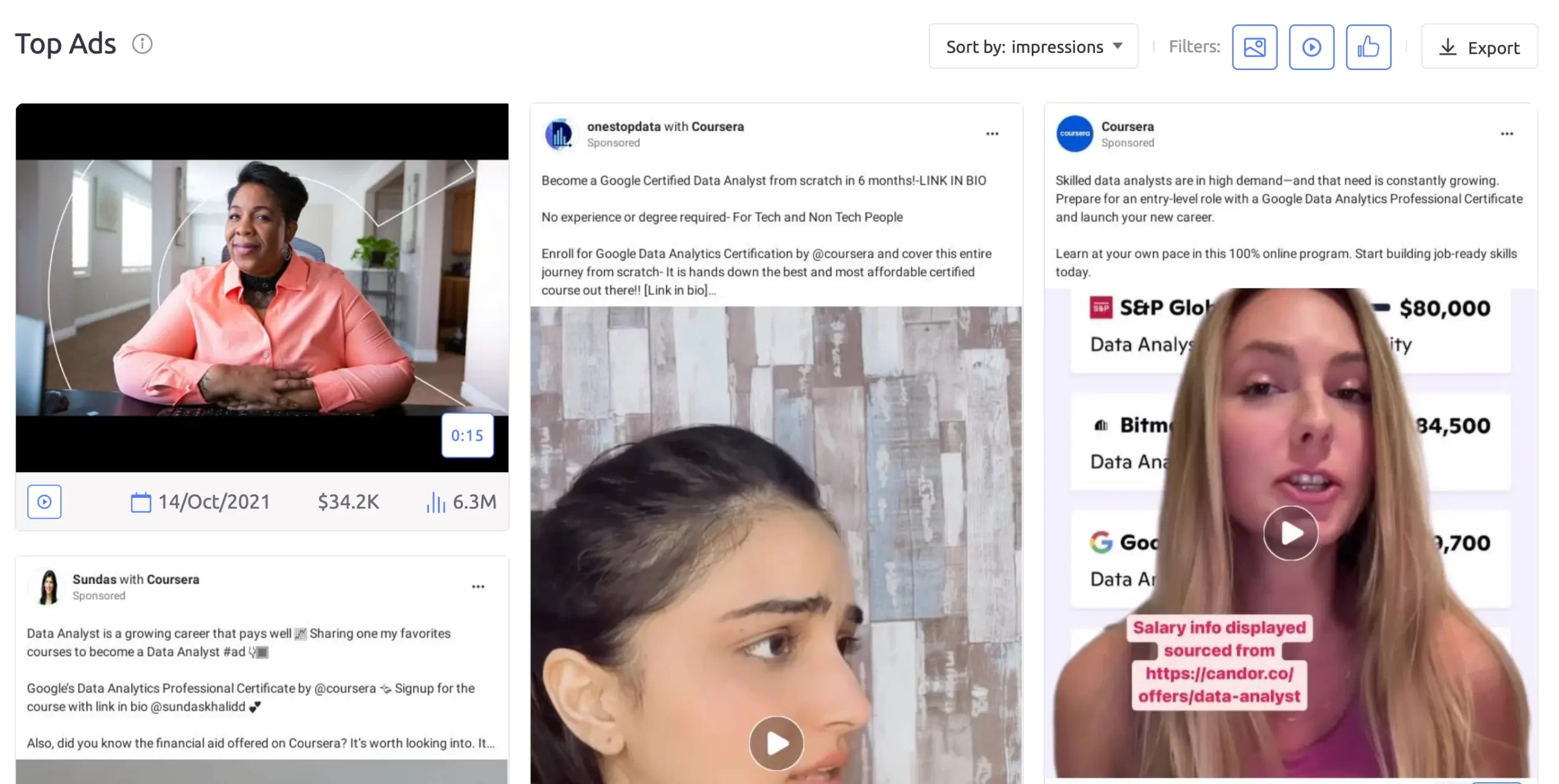
Determine what posts and content are frequently shared. Examine your competitors' unique strategies for elevating their audience growth, such as working with partners or leveraging paid promotion techniques.
These insights will help you discover how to reach a target audience in your industry consistently and effectively.
10. Measure and Monitor Audience Size
Finally, building an audience takes time and dedication. You must constantly produce excellent content, engage your followers, and strengthen relationships. The only way to optimize your growth is to collect the right insights.
Start by benchmarking crucial metrics related to audience growth, then monitor your progress every few months. You can look at:
- Number of email subscribers
- Number of social media followers per platform
- Audience engagement (likes, comments, shares, etc.)
- Average number of return visitors on your website (You can find this using the Retention report in Google Analytics 4)
- Traffic churn (the number of customers who don’t return to your site)
It’s also worth looking at which types of content you produce generate the best results. Focus on finding your highest-performing blogs, videos, and podcasts so you can replicate the same strategy going forward.
Using other analytical tools, you can also look at the strength of your relationship with your consumers. For instance, social monitoring tools can show how many people talk about your brand and what they think of your products or services.
Conclusion
Building an audience in today’s competitive online world can seem challenging.
It’s about more than simply reaching as many people as possible through different channels. You must also ensure you’re actively cultivating relationships with the right people.
A robust content calendar, a strong understanding of your target audience, competition, and marketplace, and a combination of marketing campaigns will help you to reach the right people and nurture your prospects into loyal brand advocates.



